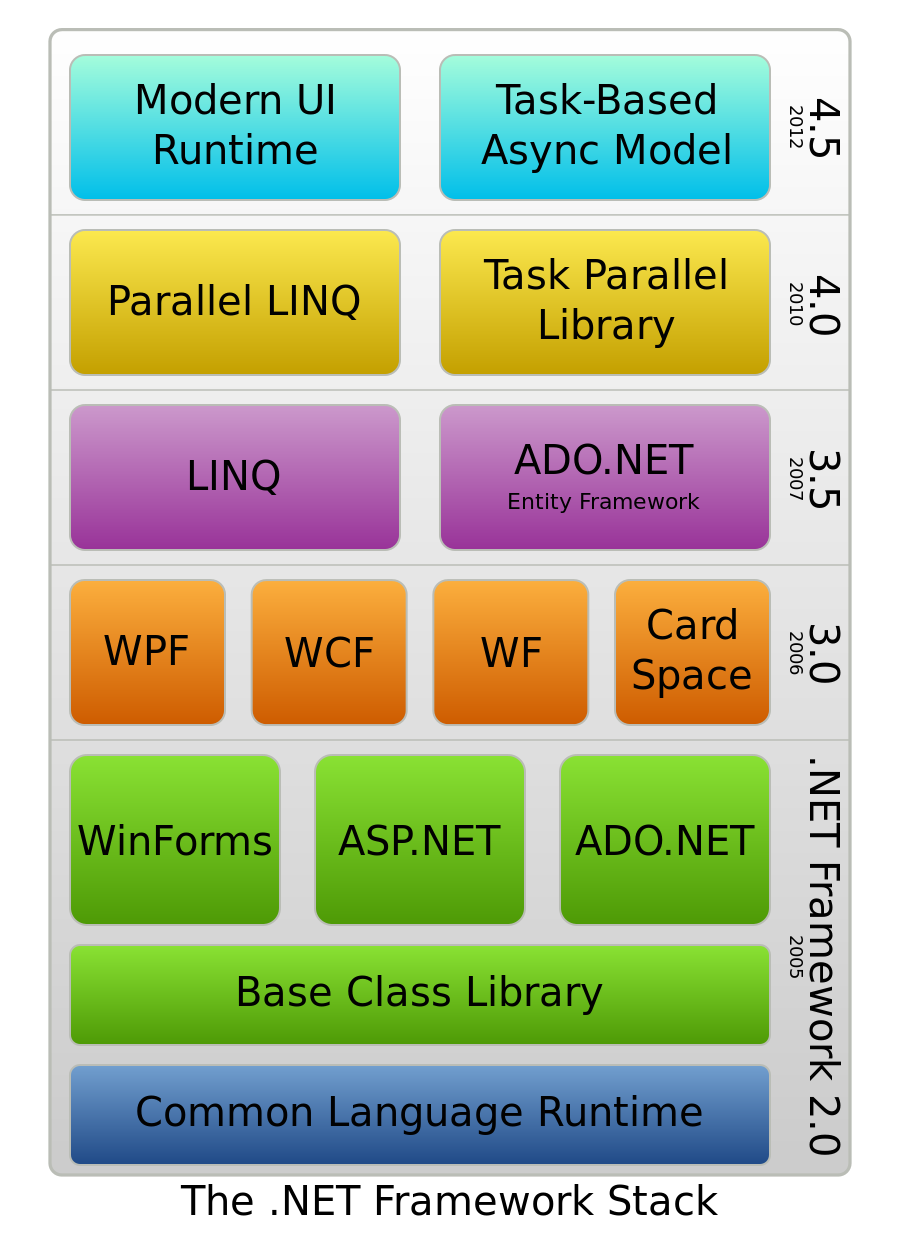



.NET Framework (pronounced dot net) is a software framework developed by Microsoft that runs primarily on Microsoft Windows. It includes a large library and provides language interoperability (each language can use code written in other languages) across several programming languages. Programs written for .NET Framework execute in a softwareenvironment (as contrasted to hardware environment), known as the Common Language Runtime (CLR), an application virtual machine that provides services such as security, memory management, and exception handling. The class library and the CLR together constitute .NET Framework.
.NET Framework's Framework Class Library provides user interface, data access, database connectivity, cryptography,web application development, numeric algorithms, and network communications. Programmers produce software by combining their own source code with .NET Framework and other libraries. .NET Framework is intended to be used by most new applications created for the Windows platform. Microsoft also produces an integrated development environment largely for .NET software called Visual Studio.
The .NET Framework is a technology that supports building and running the next generation of applications and XML Web services. The .NET Framework is designed to fulfill the following objectives:
To provide a consistent object-oriented programming environment whether object code is stored and executed locally, executed locally but Internet-distributed, or executed remotely.
To provide a code-execution environment that minimizes software deployment and versioning conflicts.
To provide a code-execution environment that promotes safe execution of code, including code created by an unknown or semi-trusted third party.
To provide a code-execution environment that eliminates the performance problems of scripted or interpreted environments.
To make the developer experience consistent across widely varying types of applications, such as Windows-based applications and Web-based applications.
To build all communication on industry standards to ensure that code based on the .NET Framework can integrate with any other code.
Microsoft started development of .NET Framework in the late 1990s, originally under the name of Next Generation Windows Services (NGWS). By late 2000, the first beta versions of .NET 1.0 were released.
Version 3.0 of .NET Framework is included with Windows Server 2008 and Windows Vista. Version 3.5 is included with Windows 7 and Windows Server 2008 R2, and can also be installed on Windows XP and Windows Server 2003.[2] On 12 April 2010, .NET Framework 4 was released alongside Visual Studio 2010.
.NET Framework family also includes two versions for mobile or embedded device use. A reduced version of the framework, .NET Compact Framework, is available on Windows CE platforms, including Windows Mobile devices such as smartphones. Additionally, .NET Micro Framework is targeted at severely resource-constrained devices.
